Gain insight into the enigmatic figure of Satan and the debated number of lives he claimed in biblical stories.

How Many People Did Satan Kill in the Bible
In the grand tapestry of biblical narratives, Satan's handiwork has led a few souls to meet their untimely departure. You might find yourself wondering just how significant his impact has been compared to other figures within these sacred texts.
Specifically, the stories of Job and the incident involving David's census provide intriguing insights into the nature of Satan's influence and the direct or indirect outcomes of his actions. These accounts open a window to a deeper understanding of the complexities surrounding his role and the consequences thereof.
Let's embark on a journey to uncover these layers, shall we?
Key Takeaways
- Satan directly caused the deaths of Job's ten children through natural disasters.
- Indirectly influenced David, leading to the death of 70,000 men from a plague.
- The Bible attributes relatively few direct deaths to Satan compared to God or humans.
- Satan's actions in the Bible primarily serve to test faith and morality, not to kill.
Understanding Biblical Context

To fully grasp the actions and influence of Satan in the biblical narrative, it's essential to delve into the historical and cultural context of the texts. Understanding the times in which these stories were written is crucial for interpreting the events accurately. Historical accuracy isn't just about pinpointing dates or places; it's about comprehending the mindset and worldview of the people who penned these accounts. The biblical texts emerged from a milieu steeped in mythological storytelling, where supernatural entities were often used to explain natural phenomena or moral lessons.
Cultural interpretations of Satan's role in these narratives vary significantly across different communities and time periods. In ancient times, the concept of Satan wasn't as a singular embodiment of evil as often depicted in modern interpretations. Instead, Satan's character served as an adversary or a challenger within the stories, whose actions need to be understood within the broader context of the narrative's moral and theological lessons.
This distinction is vital. It reminds you that the depiction of Satan killing people in the Bible can't be taken at face value without considering the cultural lens through which these stories were conceived. The accounts of Satan's actions are intertwined with the cultural, religious, and philosophical beliefs of the time, which influence how these stories were told and how they should be interpreted.
The Nature of Satan's Influence
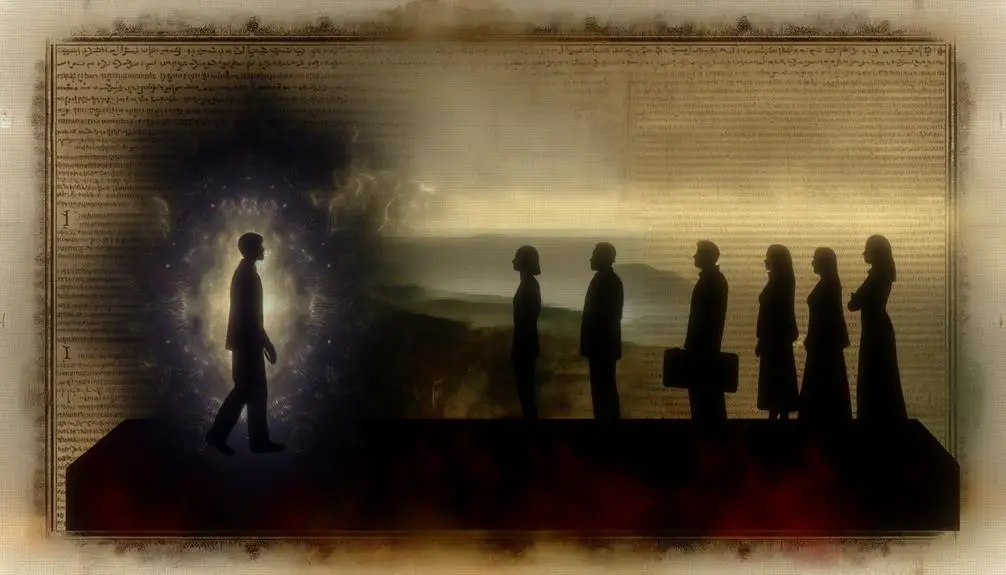
You'll find that Satan's influence in the biblical narrative is complex and multifaceted. His role is often defined through his interactions with humans, where he primarily functions as a source of moral temptation.
This section will examine how these temptations are illustrated and the broader implications they've on understanding Satan's impact.
Satan's Role Defined
Understanding Satan's role in the biblical narrative requires an examination of the nuanced ways his influence manifests, moving beyond mere counts of his direct actions. Central to this understanding is delving into Satan's origin, which is pivotal in comprehending the breadth of his impact throughout the text.
Traditionally viewed as a fallen angel, his journey from a celebrated position to the embodiment of evil underpins the redemption debate. This discourse explores whether entities, especially those as maligned as Satan, possess the potential for redemption.
Such discussions are essential, as they illuminate the complex nature of his influence, which isn't solely rooted in direct malevolence but also in the broader questions of morality, free will, and redemption that his story raises within the biblical context.
Moral Temptations Illustrated
In examining Satan's influence within the biblical narrative, it's crucial to recognize how his role extends beyond direct actions to encompass moral temptations that challenge individuals on a profound level. These ethical dilemmas often manifest as decision-making challenges, where the right path isn't always clear.
Satan's subtlety in presenting these dilemmas underscores his understanding of human nature and the complexities of moral reasoning. You're compelled to navigate these treacherous waters, making choices that reflect your deepest values and beliefs.
This aspect of Satan's influence illustrates not just a battle for survival, but a struggle for moral integrity. It's a nuanced portrayal of how temptation operates, highlighting the intricate dance between free will and moral resolve in the face of adversity.
Direct Versus Indirect Actions

Examining Satan's role in the Bible reveals a complex interplay between direct and indirect actions in influencing human mortality. This discussion requires a thoughtful analysis, balancing historical accuracy with the nuances of literary symbolism. Satan's actions, whether direct or veiled, underscore a profound narrative about morality, choice, and consequence.
Satan's role isn't just a matter of historical record but a deeply symbolic thread woven through biblical texts. His influence often manifests not through overt acts of violence but through subtler means, challenging the very nature of human freedom and morality. This duality of action—direct versus indirect—opens up a rich field of interpretation.
Consider the following points to understand the depth of this interplay:
- Satan's indirect actions often prey on human weaknesses, highlighting the struggle between good and evil within.
- Direct confrontations, while rarer, serve as pivotal moments that test faith and resolve.
- The ambiguity surrounding Satan's influence prompts readers to reflect on personal accountability.
- Understanding this dynamic is crucial for interpreting biblical narratives' moral and ethical lessons.
- This distinction also invites a broader discussion about the nature of evil and its representation in religious texts.
In analyzing Satan's role, it's essential to dissect these layers of influence. Each interaction, whether direct or indirect, carries profound implications for understanding the Bible's broader themes. This nuanced examination sheds light on the complexities of human nature, the concept of free will, and the eternal battle between good and evil.
The Job Narrative: A Closer Look
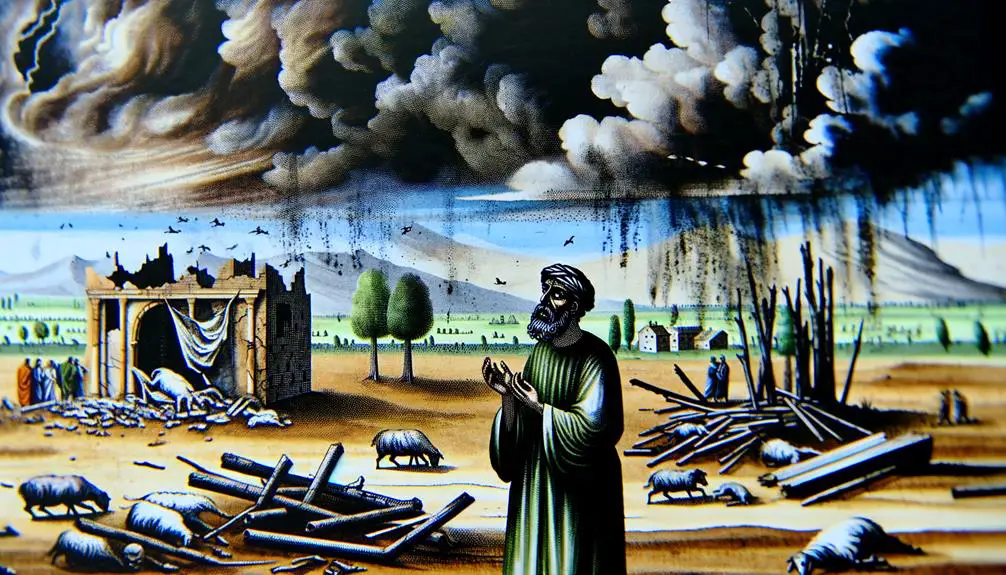
A critical examination of the Job narrative reveals Satan's role in testing Job's faith through a series of devastating trials. This story, deeply embedded within the Judeo-Christian tradition, provides a unique lens through which to view the dynamics of faith, suffering, and the metaphysical struggle between good and evil. Central to this narrative is the concept of Divine permission. God allows Satan to afflict Job, yet sets boundaries on the extent of his suffering. This aspect underscores the sovereignty of the Divine, suggesting that even in the midst of adversity, there's a greater plan at work, beyond human comprehension.
Job's resilience in the face of such trials is remarkable. Despite losing his wealth, his health, and his children, Job's faith, though tested, remains unbroken. This resilience isn't just a testament to his character but also serves as a profound lesson on the nature of faith itself. It's not the absence of questioning or despair but the persistence of trust in Divine wisdom, even when the reason eludes human understanding.
Analyzing the Job narrative, one must appreciate the complexity of the interactions between Divine permission, human suffering, and the role of Satan in this theological framework. Satan's actions, permitted by the Divine, serve as a catalyst for Job's trials, yet these same trials reveal the depth of Job's faith and resilience. This story, therefore, isn't just a tale of suffering; it's a multifaceted exploration of faith, morality, and the human condition, offering insights into the enduring human quest for understanding amidst suffering.
Counting the Deaths in Job
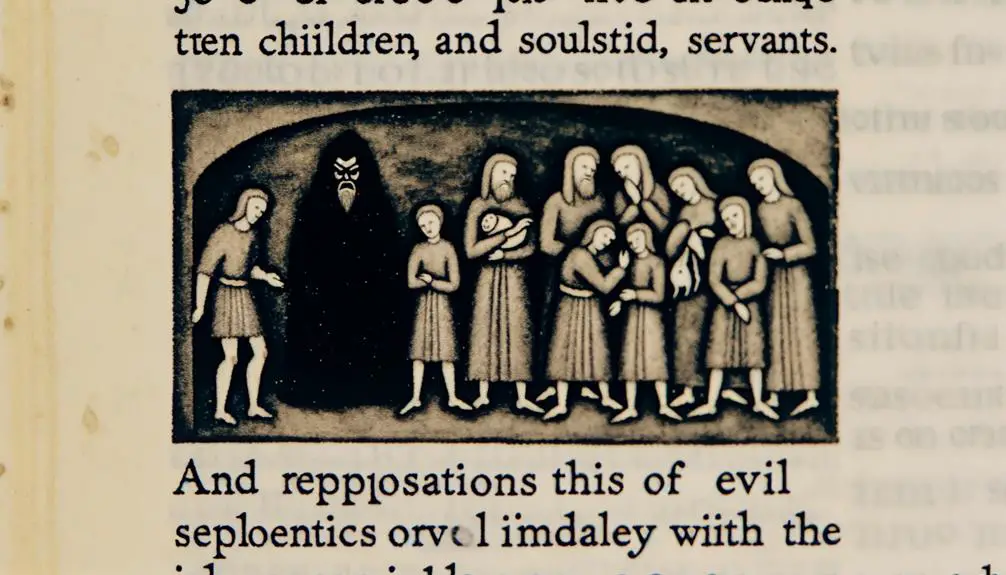
You'll find that the Book of Job presents a complex case of loss, where Satan's actions lead to the death of Job's family, servants, and livestock.
This narrative allows you to examine the direct and indirect consequences of these deaths on Job's life and faith.
Job's Family Tragedy
In the book of Job, Satan's role leads directly to the tragic deaths of Job's ten children, underscoring a pivotal moment of suffering and loss. This event isn't just a tale of sorrow but also a profound narrative on divine testing and faith resilience. As you delve into the details, consider:
- The incomprehensible grief of losing all one's children
- The challenge to Job's faith and integrity
- The silence of Job's suffering
- The profound test of loyalty to God amidst unbearable loss
- The resilience of faith in the face of inexplicable tragedy
This tragedy in Job's life isn't merely about the loss but also about enduring faith under divine testing, offering deep insights into the nature of suffering, loyalty, and the human condition.
Servants and Livestock Loss
Beyond the heart-wrenching loss of Job's ten children, his ordeal also encompasses the significant deaths of numerous servants and the vast decimation of his livestock, marking a comprehensive test of faith and endurance. These losses not only signify immense personal tragedy but also embody deep animal symbolism and grave economic impacts.
Livestock Type |
Symbolism & Economic Impact |
|---|---|
Oxen |
Symbol of wealth and plowing efficiency; economic destabilization |
Sheep |
Purity and sacrificial significance; loss of wool and meat trade |
Camels |
Transportation and trade assets; disruption of commerce |
Donkeys |
Workforce for agriculture; decline in crop production efficiency |
Servants |
Human tragedy; disruption in estate management |
Analyzing these losses reveals how intertwined animal symbolism and economic stability were in Job's time, emphasizing the multifaceted nature of his trials.
Satan's Role in David's Census
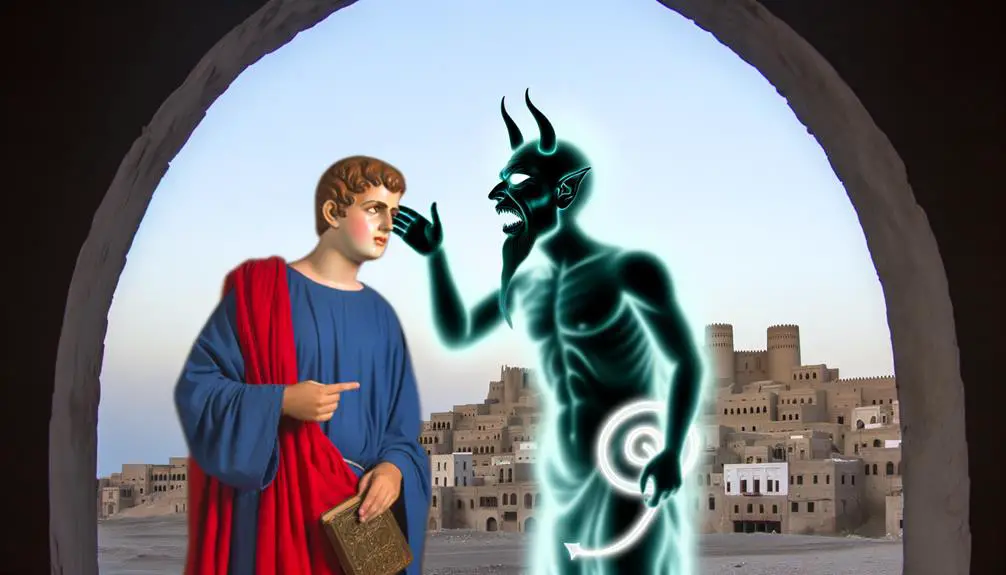
Satan's involvement in David's decision to conduct a census plays a critical role in understanding his actions within the biblical narrative. It's a moment where the subtle persuasion of Satan intersects with the royal commandment, leading to significant census consequences. This episode isn't merely a historical recount but a pivotal event that allows for a deeper examination of moral and ethical dilemmas faced by leadership under divine governance.
- The provocation by Satan to count Israel and Judah challenges the autonomy of divine will.
- David's compliance with the sinister suggestion defies the traditional reliance on divine guidance, showcasing a moment of human frailty.
- The ensuing divine punishment highlights the grave implications of disobeying spiritual mandates.
- This narrative serves as a cautionary tale about the dangers of pride and the pursuit of power.
- The emotional turmoil and subsequent divine wrath evoke a profound sense of the catastrophic consequences of seemingly mundane administrative acts.
Analyzing Satan's role in this scenario, it's evident that his influence prompts a series of events that underscore the tension between divine command and royal autonomy. The act of conducting a census, under Satan's instigation, becomes a breach of the spiritual covenant, leading to dire consequences for David and the nation. This episode illustrates the complex interplay between divine authority, royal decision-making, and the susceptibility to external influences, all of which converge to produce a moment of significant theological and moral consequence within the biblical text.
Analyzing the Death Toll

Having explored the instigation and implications of David's census, let's now assess the resulting death toll and its broader significance within the biblical text. The account, primarily found in the books of Samuel and Chronicles, states that 70,000 men died as a direct consequence of this act. This figure, while substantial, raises questions about historical accuracy and the challenges inherent in interpreting ancient texts.
When you delve into the context, it's crucial to understand that numbers in ancient texts often carry symbolic weight beyond their literal count. The figure of 70,000, therefore, mightn't only represent an actual number but also convey a message about the severity of the punishment and the magnitude of the calamity. This understanding aligns with the broader literary and theological motifs within the Bible, where numbers often serve to emphasize moral or spiritual lessons rather than to provide precise historical data.
Moreover, cultural variations in recording historical events play a significant role in how we interpret these numbers. Different ancient cultures had varied practices for counting and documenting populations and casualties. This diversity means that biblical figures should be considered within the cultural and literary context of their time rather than judged by modern standards of historical documentation.
Insights From Theological Interpretations
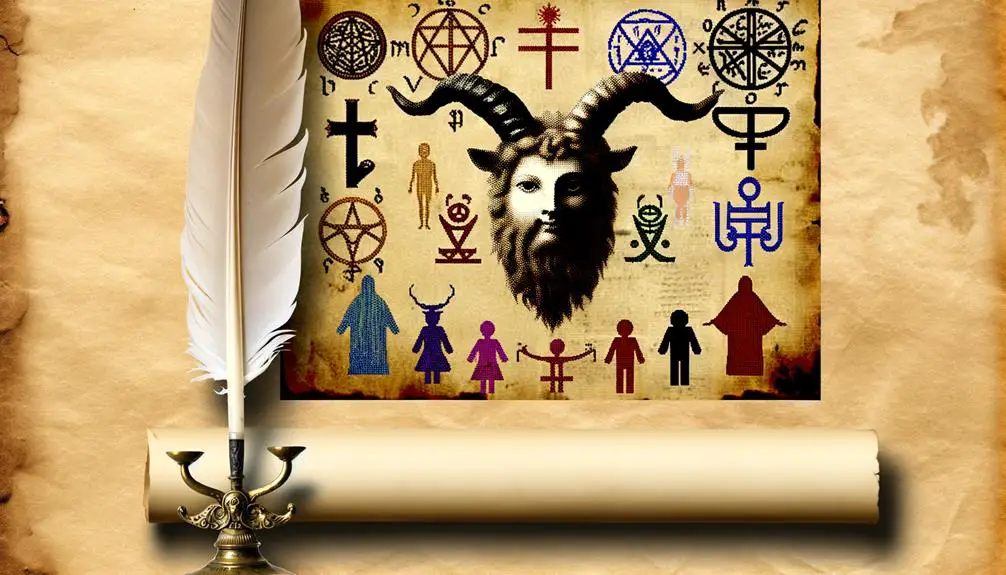
Theological interpretations offer a nuanced perspective on the death toll attributed to Satan, illuminating the complex interplay between divine justice and human agency in biblical narratives. By examining the deaths attributed to Satan within the Bible, scholars underscore the importance of understanding divine sovereignty and human free will. These concepts aren't mutually exclusive but are instead intricately linked within the fabric of biblical theology.
- Divine Sovereignty: You're reminded that, in the grand narrative of the Bible, divine sovereignty asserts that God's will ultimately prevails, even in circumstances involving death and destruction.
- Human Free Will: It's clear that human beings are presented with choices, and their decisions can lead to life or death, illustrating the significant role of human agency.
- The Nature of Evil: Through these narratives, you're confronted with the reality of evil in the world, challenging you to consider its origins and impact on human life.
- The Purpose of Suffering: The stories invite you to ponder the purpose of suffering and its role in spiritual growth and divine justice.
- God's Ultimate Victory: Ultimately, you're encouraged to see beyond the immediate pain and death, to a future where divine justice prevails and where God's sovereignty and human free will find their fulfillment in harmony.
In a scholarly analysis, these interpretations reveal that attributing a death toll to Satan is more than a matter of numbers; it's about understanding the broader theological implications of these events. Such insights challenge you to think deeply about the nature of evil, the role of free will, and the ultimate sovereignty of the divine.
Frequently Asked Questions
How Do Different Religious Traditions Interpret Satan's Role and Actions Differently Within Their Own Texts and Teachings Outside the Bible?
In exploring Satan's role across various faiths, you'll find interfaith dialogues shed light on differing interpretations. Mythological comparisons highlight how each tradition uniquely views Satan's actions.
For instance, in Islam, Satan is seen as a jinn refusing to bow to Adam, while in Christianity, he's often the embodiment of evil. This analytical dive reveals the rich, varied perspectives religious teachings offer, moving beyond singular narratives to embrace a multifaceted understanding.
What Psychological Implications Can Be Drawn From the Narratives Involving Satan and Death in the Bible, and How Do They Impact Modern Believers' Views on Morality and Evil?
When analyzing the narratives of Satan and death in the Bible, you'll find they often introduce moral ambiguity and employ fear manipulation. These stories significantly influence your understanding of morality and the concept of evil, shaping how you perceive these issues today.
Such tales prompt you to question the nature of right and wrong, compelling a deeper reflection on your own beliefs and the societal norms that govern behavior and ethical standards.
Are There Any Archaeological Findings or Historical Evidence That Support or Contradict the Events Involving Satan That Led to Deaths in the Bible?
You're looking into archaeological evidence relating to biblical events involving Satan. Unfortunately, there's no direct archaeological or historical evidence, such as geological surveys or artifact authenticity checks, that can conclusively support or contradict these specific narratives.
Most of these stories are interpreted through theological or metaphorical lenses rather than empirical evidence. This gap often leaves scholars and believers alike to rely on faith or scriptural interpretation rather than tangible proof.
How Have Depictions of Satan and His Actions Leading to Death Evolved in Literature and Art Throughout the Centuries, and What Cultural Shifts Do They Reflect?
You'll find that depictions of Satan and his deathly actions have morphed significantly in literature and art over the centuries. This evolution mirrors shifts in cultural perceptions and the use of artistic symbolism to convey these changes.
From medieval paintings to modern novels, each era's portrayal of Satan reflects contemporary societal values and fears, illustrating a complex relationship between humanity and the embodiment of evil across different historical periods.
In What Ways Have Modern Theological Debates and Interpretations of Satan's Influence in the Bible Diverged From Traditional Views, Particularly Regarding the Concept of Free Will and Divine Justice?
Navigating modern theological debates is like walking through a labyrinth; every turn reveals new perspectives on Satan's empathy and divine retribution.
You'll find scholars diverging from traditional views, particularly around free will and divine justice.
They scrutinize ancient texts through contemporary lenses, questioning how Satan's influence should be interpreted.
This scholarly journey reflects a shift towards understanding these concepts not as black and white, but as nuanced and complex.
Conclusion
In conclusion, while the Bible attributes only a limited number of direct deaths to Satan, notably in the Job narrative, the true impact lies in the subtlety of his influence.
Strikingly, it's through seemingly coincidental actions, like inciting David to conduct a census, that broader consequences unfold, leading to indirect fatalities.
This nuanced examination reveals Satan's role is more about the erosion of faith and incitement than overt acts of violence, offering profound insights into the nature of evil and temptation.



Sign up